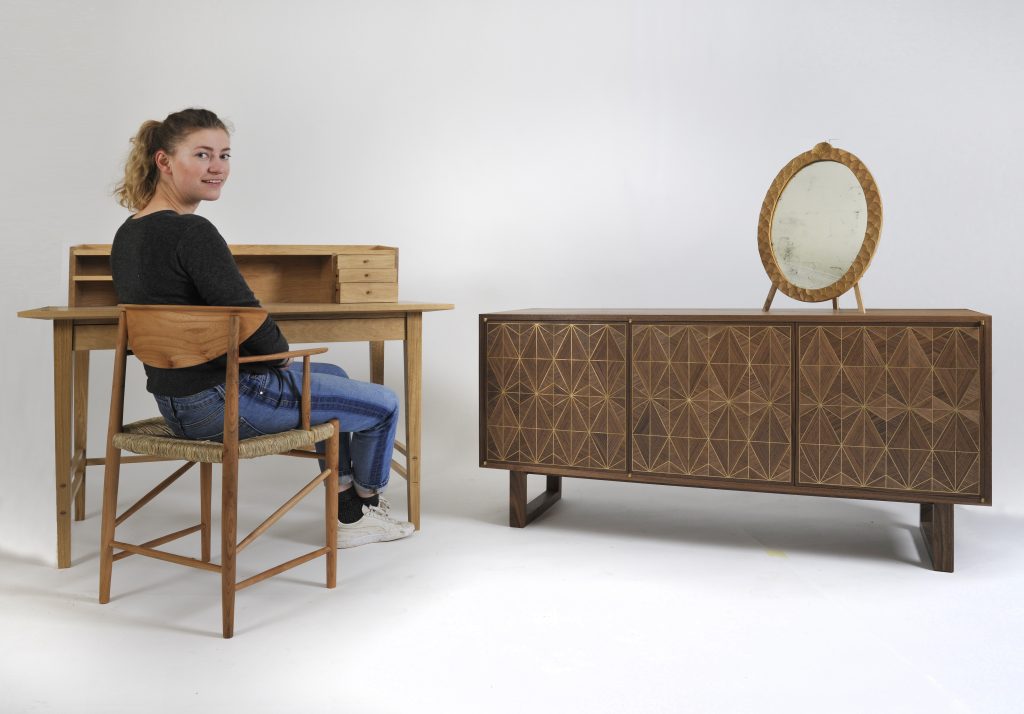The Chippendale school is proud of our track record in helping to launch the careers of woodworkers from around the world.
But we were surprised this year when one of our students, Archana Pai, told us that when she returned home she would be one of very few female furniture makers in India.
That might be the case there, but what we have seen is a gradual increase in the number of female students enrolling at the Chippendale school.
For example, our last two intermediate course students, Sarah Quick from Scotland, and Mara Dreger from Brazil were both women.
This year, apart from Archana Pai, we had Charlie Camp from New Zealand, Candace Roberts from Trinidad & Tobago, Vanessa Johnston from the USA, and Mary Anne Kyle and Honor Dalrymple from Scotland.
Indeed, Honor won our Student of the Year accolade for her portfolio, and Vanessa won the prestigious Chippendale Society award 2018.
Honor (pictured above) came to us as a trained civil engineer and had worked as a structural engineer, and that background enabled her to visualise in 3D, understand structure and the strength and limitations of materials.
Honor’s award was matched two years ago by Iana Molotok, a hugely-gifted student from Russia who has now returned to her native St Petersburg.
And last year, among other female students, we had Joanna Majewska (pictured below) from Poland, who stayed on at the Chippendale school to open her own furniture design business from incubation space.

We’d very much like more women to consider a career in woodworking and, we believe, women often have a more natural affinity to combining the design aesthetics and practical sides of the trade.
For example, it was an American Shaker woman, Tabitha Babbitt, who invented the first water-powered circular saw.
Indeed, from Charlotte Perriand to Margaret MacDonald Mackintosh and Eileen Gray, female furniture designers have helped to inspire some of the biggest artistic movements, including Art Deco and modernism.
The great Ray Eames, for example, made ground-breaking contributions in the fields of architecture, and furniture and industrial design. She embraced the visionary idea of modern design as an agent of social change.
Her husband and design partner, Charles, famously said, “Anything I can do, Ray can do better.”
We’ve been involved in campaigns to raise the profile of woodworking generally with careers advisors in schools, because few realise that furniture design is a career option for young students.
But we’d also like to encourage more women into woodworking because it is, primarily, about artistic design rather than brute hard work. For both sexes, modern machinery takes much of the hard work out of woodworking.
So if you’re a women thinking about furniture design and making as a career, it really is no longer a man’s world.
The number of women woodworkers grows every year, and that’s something we’d like to applaud and encourage.
